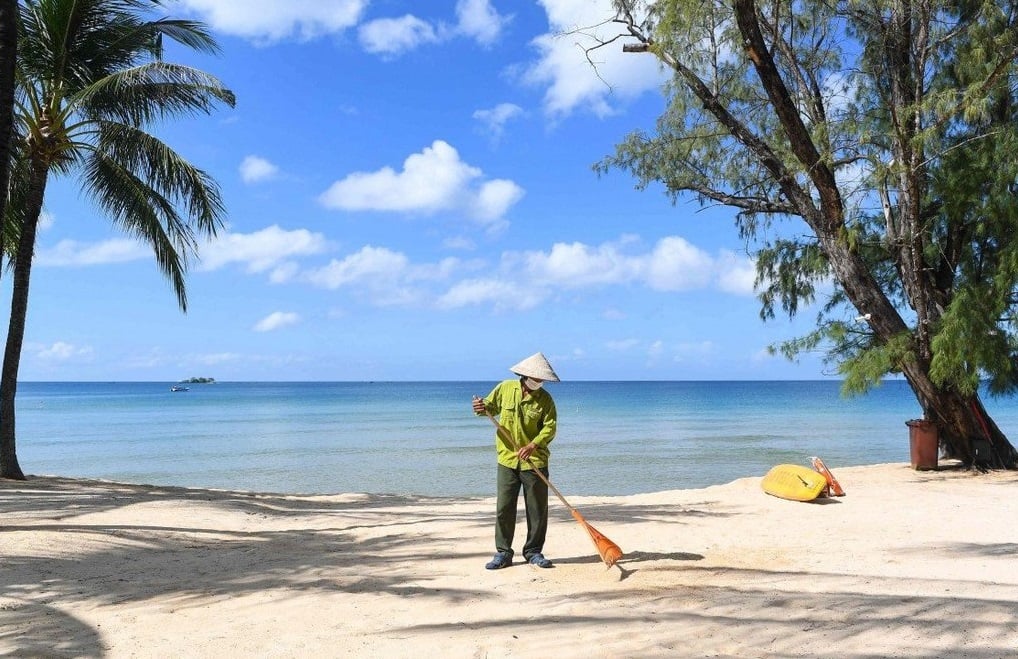The dry earth of Africa feels more like solid rock to the uninitiated, including me and 14 other Americans on a volunteer project some 20 miles inland from the resort town of Malindi on the Kenyan coast. We have come to help impoverished villagers build a classroom for their children. But the Giriama people who inhabit this parched hinterland without running water and electricity quickly discover that we’re the ones in need of schooling, as in how to use a jembe—the hoe-like tool used to break up the hardened volcanic soil on which the building’s foundation will go. Members of our team take turns swinging and digging in the heat, showing scant progress until six barefoot village women come to the rescue. In an hour, they accomplish more than our well-meaning group has been able to achieve in half a day. It continues like this for two weeks: We do our best to help, and they do their best to help us get it right.
That was more than a decade ago. Today, volunteering while traveling, or voluntourism, has exploded into one of the fastest growing sectors of the global travel industry. In a 2009 study by CMIGreen, 59 percent of travelers surveyed expressed interest in volunteering on a future trip. The trend shows no sign of abating, and the number of options has grown exponentially, ranging from a day building fuel-efficient woodstoves tacked on to an adventure trip in Belize to a 12-week stint as a caregiver in a Delhi slum. Organizations run the gamut from one-stop clearinghouses such as i-to-i Volunteering, where travelers can choose from 166 projects in 21 countries, to tiny outfits such as Virginia-based Global Voluntourism that specializes in Southeast Asia.
But who really benefits from this flood of well-meaning effort? Many of the organizations involved are for-profit companies, raising concerns that the rush to cash in on today’s goodwill traveler could be leading to badly conceived projects that meet the needs of voluntourism outfitters more than those of the locals they are supposed to be helping.
“It all sounds good in principle. But the reality is often the opposite,” says Daniela Papi, a leading voice among those challenging the voluntourism industry and calling for accountability from the players involved. Six years ago, Papi traveled to rural Thailand on a voluntourism trip. “At the end of a weeklong cycling tour we painted a school. It occurred to me that the $200 spent on paint would have been better used to pay the salary of the struggling local teachers.” Motivated to get it right, Papi moved to Cambodia from New York and started her own organization, PEPY, focused on empowering locals to have a larger say in how volunteers can help. She believes that travelers can be more helpful by educating themselves, asking locals about their needs, and generally avoiding the “impulse to dig a well or give people things.”
More researchers and nonprofit groups have begun to doubt the promise that people can significantly help the needy as part of a vacation. One study concluded that programs using untrained, short-term volunteers in African orphanages are potentially exploitative. Published in 2010 by the U.K. journal Vulnerable Children and Youth Studies, the study noted that there were no formal regulations to protect children from potential harm, including the psychological impact of repeated emotional attachments and abandonments from waves of volunteers.
Community development work is complex and perhaps better left to trained staff. Even the Peace Corps, celebrating its 50th anniversary this year, continues to wrestle with who benefits the most—those in need or the volunteers. As a former Peace Corps country director, I organized dozens of projects; I can tell you that they can fail, or benefits to locals may be modest or difficult to quantify. Volunteers, however, are invariably changed in positive ways—cross-cultural awareness, language learning, and international work experience are all pluses on a résumé. Ironically, setting out to help others may end up being more helpful to you.
“The rapid growth of voluntourism has led to serious issues, but it would be a mistake to throw the baby out with the bathwater,” says Megan Epler Wood of Planeterra, a foundation focused on sustainable development through tourism. “We urgently need a set of broadly accepted criteria.” Last April, Planeterra and the International Ecotourism Society announced plans to develop global guidelines for voluntourism to be ready in 2012.
Cultural differences and extreme disparities between the haves and the have-nots make caregiving projects especially problematic. However, not all programs are focused on social welfare. For decades, organizations such as Earthwatch and the Sierra Club have been successfully running voluntourism programs, from maintaining trails to monitoring sea turtles. Volunteers work closely with local guides and scientists, who lead the projects with clear goals and careful oversight.
The good news in all of this, of course, is the existence of a vast pool of travelers who also want to give back when they hit the road. The responsibility of the voluntourism industry is to harness their energies in the best possible way. Until clear guidelines are established, the challenge to individual travelers is to make the right choices.
My advice: Start by probing your own motivations, and be honest with yourself about what you find out. Ask questions such as how much of what you pay goes directly to the project, and whether your participation could be replacing local workers. Since it is common for voluntourism companies to hand off participants to an in-country partner, research the project partner thoroughly. One of the original websites on voluntourism (www.voluntourism.org) provides good background information.
We never did finish that classroom in Kenya; the villagers finished the work after we left. But the friendships forged while laboring, living, and laughing together with the Giriama people greatly enriched all of our lives. For some in our group, the impact was profound, leading them to careers dedicated to grassroots community service. Our modest contribution to the construction work, along with the cement and other materials we provided, was appreciated by the community. Who benefited the most? I think we did. But then again, when I returned five years later, that classroom was filled with Giriama kids being taught by an enthusiastic local teacher.
This article is re-printed with permission from the author. Editor at large Costas Christ writes about sustainability and tourism issues. E-mail your comments to [email protected].












![China's Hyperloop Train: A Glimpse into the Future of Transportation 11 Travel Tourism News | Domestic & International Hyperloop Train China [Photo: Hyperloop Transportation Technologies]](https://eturbonews.com/wp-content/uploads/2024/02/180720163348-hyperlooptt-china-capsule-145x100.jpg)









